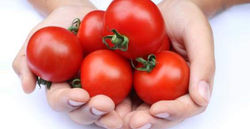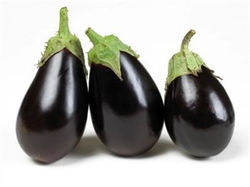Ferrera srl _ Ingrosso Ortofrutta _ Ingrosso Carciofi / Ingrosso pomodoro / Ingrosso ciliegino / Ingrosso melone giallo / Ingrosso mini angurie / Ingrosso grano / Ingrosso melanzana
Ingrosso zucchina / Ingrosso peperone / Ingrosso uva
Wholesale Fruit & Vegetables _ Niscemi / Siciliy / Italy Artichokes wholesale / wholesale tomato / cherry wholesale / wholesale yellow melon / wholesale mini watermelons / wholesale grain / wholesale eggplant / zucchini wholesale / wholesale pepper / wholesale grape

 GRAPE |  grape |  TOMATOES |
|---|---|---|
 CHERRY TOMATO |  ARTICHOKE |  ZUCCHINI |
 EGGPLANT |  ARTIHCOKE |  MINI WATERMELON |
 READY TO PREPARE |
"The pace of modern life is often neglected fresh produce, nutrients and good, only because they require time and care before be consumed. "
The preparation of Artichokes does not occur fast and easy: it is a vegetable inconvenient and time-consuming to clean because of the elimination'' the outer leaves and trimming the receptacle and stem; also requires the use of solutions'' antioxidants, such as juice lemon, to avoid the known process of browning.
Given the importance of this vegetable in the national and in particular in the Niscemese (Niscemi is the capital of Artichoke, its companies produce half of the Sicilian production:
in Niscemi produces 12% of the artichokes around the world), the Company Ferrera Ltd. introduced the IV Range Artichoke to enhance that product and make it practical to cook.
From the next production (November 2011-April 2012), the Company Ferrera srl will therefore available on the market and on the counters of large deployments the product ready to use and suitable for many opportunities for consumption, capable of maintaining unchanged the
nutritional and organoleptic characteristics "during the conservation.
The processing of artichokes IV Range consists in cleaning the heads, stem and outer bracts, the "artichoke hearts" are then sprayed with water and lemon juice to prevent browning.
This treatment slows or inhibits the enzymatic browning and limits the development of spoilage microorganisms guaranteeing a period of storage up to 15 days under refrigerated conditions (minimum guaranteed), also works on the maintenance of the characteristics organoleptic properties.
Artichokes IV range are then packaged in trays polypropylene wrapped in plastic film, each of which contains 4 heads.
READY-PREPARED ARTICHOKE

ALL ABOUT THE PRINCE OF VEGETABLES
Origins
The artichoke, common name Cynaria scolymus, is a vegetable that belongs to the family Compositae.
It has Mediterranean origin, unknown in the wild, is a varieties derived from picks of the thistle (Cardo cardunculus). It is a plant known since ancient times: the Egyptians knew him and The Greeks used it. (The present name derives from the greek Kynara). The cultivation of the artichoke is more marked in some countries Mediterranean, especially in Italy, but also in France and Spain, while little is known in many other states. The best cultivation of the artichoke you are still in Sicily where the climate, the soil characteristics as well as the skill of farmers have allowed production examples of artichokes Niscemi is the capital of the Italian artichoke. The majority of commercial production is destined for the fresh consumption, the rest is used as a product preserved or frozen.
Recall that the Company Ferrera Ltd. from November offers to market the new product READY-PREPARED ARTICHOKE which will have the product in the kitchen ready for cooking.
Calorie and nutrition facts for Artichoke 100 gr. Product
Kcal = 22
Protein = 2,7 gr.
Fat = 0,2 gr.
Carbohydrates = 2,5 gr.
Fiber = 1,1 gr.
Water = 84 gr.
Idrati di carbonio = 11,9 gr.
Vitamin = A, B1 e C (in small doses)

Scientific studies on artichoke
Some studies suggest the polyphenols contained in artichokes, important molecules that make them particularly healthy: substances remain notoriously intact their characteristics also in case of cooking
steam, as well as having antioxidant properties, and it seems that they are in protect - albeit partially - by tumors.
In a search published in "Nutrition and Cancer" reported that polyphenols
artichoke may counteract the oxidative action of free radicals and
interfere with the molecular processes which induce the transformation
tumor. Were monitored some healthy volunteers who had consumed a meal of artichokes and cooked for the first time been found in humans that the bioactive molecules present in the artichoke, have the ability to transfer into the circulation its components active.
For this reason, scientists are proving moderately optimistic believe in the possibility of protective substances for the artichoke.
As regards the tumoral pathologies.
(Source: www.benessere.com)
The artichoke diets
It is recommended to eat it raw, with a little 'lemon to soften the taste
bitter and also because in this way can be preserved integrating all its nutrients that would otherwise be lost with cooking.
It should, however, choose wisely, they must be very fresh that is, the stem must break with the pressure of a finger and does not must bend.
With "only" 22 calories/100 grams. of product would be appropriate
also eat the stem and leaves, full of healthy substances.
Translated with Google Translate